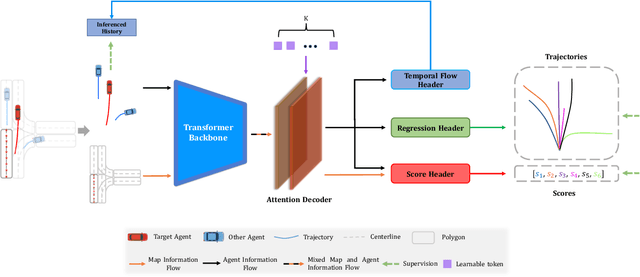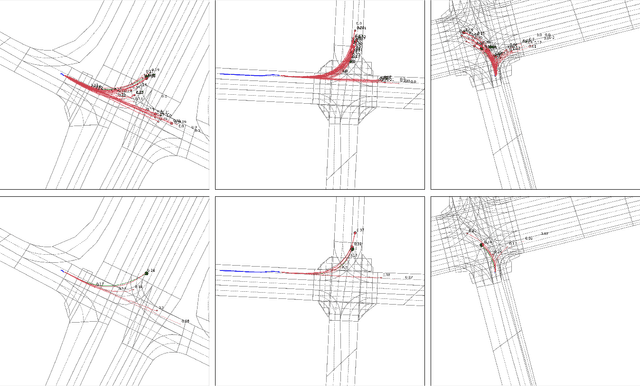Xuefeng Wang
Pushing DSP-Free Coherent Interconnect to the Last Inch by Optically Analog Signal Processing
Mar 14, 2025Abstract:To support the boosting interconnect capacity of the AI-related data centers, novel techniques enabled high-speed and low-cost optics are continuously emerging. When the baud rate approaches 200 GBaud per lane, the bottle-neck of traditional intensity modulation direct detection (IM-DD) architectures becomes increasingly evident. The simplified coherent solutions are widely discussed and considered as one of the most promising candidates. In this paper, a novel coherent architecture based on self-homodyne coherent detection and optically analog signal processing (OASP) is demonstrated. Proved by experiment, the first DSP-free baud-rate sampled 64-GBaud QPSK/16-QAM receptions are achieved, with BERs of 1e-6 and 2e-2, respectively. Even with 1-km fiber link propagation, the BER for QPSK reception remains at 3.6e-6. When an ultra-simple 1-sps SISO filter is utilized, the performance degradation of the proposed scheme is less than 1 dB compared to legacy DSP-based coherent reception. The proposed results pave the way for the ultra-high-speed coherent optical interconnections, offering high power and cost efficiency.
OTFS-ISAC System with Sub-Nyquist ADC Sampling Rate
Feb 07, 2025Abstract:Integrated sensing and communication (ISAC) has emerged as a pivotal technology for next-generation wireless communication and radar systems, enabling high-resolution sensing and high-throughput communication with shared spectrum and hardware. However, achieving a fine radar resolution often requires high-rate analog-to-digital converters (ADCs) and substantial storage, making it both expensive and impractical for many commercial applications. To address these challenges, this paper proposes an orthogonal time frequency space (OTFS)-based ISAC architecture that operates at reduced ADC sampling rates, yet preserves accurate radar estimation and supports simultaneous communication. The proposed architecture introduces pilot symbols directly in the delay-Doppler (DD) domain to leverage the transformation mapping between the DD and time-frequency (TF) domains to keep selected subcarriers active while others are inactive, allowing the radar receiver to exploit under-sampling aliasing and recover the original DD signal at much lower sampling rates. To further enhance the radar accuracy, we develop an iterative interference estimation and cancellation algorithm that mitigates data symbol interference. We propose a code-based spreading technique that distributes data across the DD domain to preserve the maximum unambiguous radar sensing range. For communication, we implement a complete transceiver pipeline optimized for reduced sampling rate system, including synchronization, channel estimation, and iterative data detection. Experimental results from a software-defined radio (SDR)-based testbed confirm that our method substantially lowers the required sampling rate without sacrificing radar sensing performance and ensures reliable communication.
DeepSafeMPC: Deep Learning-Based Model Predictive Control for Safe Multi-Agent Reinforcement Learning
Mar 12, 2024Abstract:Safe Multi-agent reinforcement learning (safe MARL) has increasingly gained attention in recent years, emphasizing the need for agents to not only optimize the global return but also adhere to safety requirements through behavioral constraints. Some recent work has integrated control theory with multi-agent reinforcement learning to address the challenge of ensuring safety. However, there have been only very limited applications of Model Predictive Control (MPC) methods in this domain, primarily due to the complex and implicit dynamics characteristic of multi-agent environments. To bridge this gap, we propose a novel method called Deep Learning-Based Model Predictive Control for Safe Multi-Agent Reinforcement Learning (DeepSafeMPC). The key insight of DeepSafeMPC is leveraging a entralized deep learning model to well predict environmental dynamics. Our method applies MARL principles to search for optimal solutions. Through the employment of MPC, the actions of agents can be restricted within safe states concurrently. We demonstrate the effectiveness of our approach using the Safe Multi-agent MuJoCo environment, showcasing significant advancements in addressing safety concerns in MARL.
NLP-based detection of systematic anomalies among the narratives of consumer complaints
Aug 22, 2023



Abstract:We develop an NLP-based procedure for detecting systematic nonmeritorious consumer complaints, simply called systematic anomalies, among complaint narratives. While classification algorithms are used to detect pronounced anomalies, in the case of smaller and frequent systematic anomalies, the algorithms may falter due to a variety of reasons, including technical ones as well as natural limitations of human analysts. Therefore, as the next step after classification, we convert the complaint narratives into quantitative data, which are then analyzed using an algorithm for detecting systematic anomalies. We illustrate the entire procedure using complaint narratives from the Consumer Complaint Database of the Consumer Financial Protection Bureau.
AC2C: Adaptively Controlled Two-Hop Communication for Multi-Agent Reinforcement Learning
Feb 24, 2023Abstract:Learning communication strategies in cooperative multi-agent reinforcement learning (MARL) has recently attracted intensive attention. Early studies typically assumed a fully-connected communication topology among agents, which induces high communication costs and may not be feasible. Some recent works have developed adaptive communication strategies to reduce communication overhead, but these methods cannot effectively obtain valuable information from agents that are beyond the communication range. In this paper, we consider a realistic communication model where each agent has a limited communication range, and the communication topology dynamically changes. To facilitate effective agent communication, we propose a novel communication protocol called Adaptively Controlled Two-Hop Communication (AC2C). After an initial local communication round, AC2C employs an adaptive two-hop communication strategy to enable long-range information exchange among agents to boost performance, which is implemented by a communication controller. This controller determines whether each agent should ask for two-hop messages and thus helps to reduce the communication overhead during distributed execution. We evaluate AC2C on three cooperative multi-agent tasks, and the experimental results show that it outperforms relevant baselines with lower communication costs.
TENET: Transformer Encoding Network for Effective Temporal Flow on Motion Prediction
Jun 30, 2022



Abstract:This technical report presents an effective method for motion prediction in autonomous driving. We develop a Transformer-based method for input encoding and trajectory prediction. Besides, we propose the Temporal Flow Header to enhance the trajectory encoding. In the end, an efficient K-means ensemble method is used. Using our Transformer network and ensemble method, we win the first place of Argoverse 2 Motion Forecasting Challenge with the state-of-the-art brier-minFDE score of 1.90.
 Add to Chrome
Add to Chrome Add to Firefox
Add to Firefox Add to Edge
Add to Edge